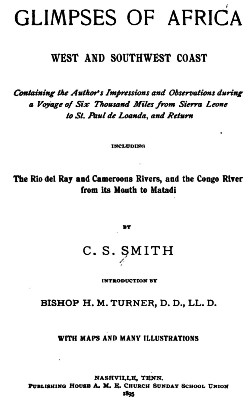
c. s. smith : batanga canoes, west africa, 1895
| home | catalogue | history | references | appendix |
 |
surfresearch.com.au
c. s. smith : batanga canoes, west africa, 1895 |
Internet Archive
http://archive.org/details/glimpsesafricaw00smitgoog
For other reports from West Africa, see:
1812 Henry Meredith : Canoe
Surf Riding on Gold Coast, Africa.
1835 James Edward
Alexander :
West Africa.
1861 Thomas J. Hutchinson : Surfboard
Riding in Gabon, Africa.
1876 Hugh Dyer : Surf
Boats in West Africa.
1887 Alfred Burton Ellis : Surf
Dieties of West Africa.
1891 The Graphic
: Surf Boats, Ghana.
1949 Jean Rouch
: Surf Riding at Dakar, Senegal.
The Batanga people,
though not always living on the seaboard, have become noted canoemen.
They have two
kinds of canoes.
One is made of
cork wood and very light, and intended only for one person.
The other is
made of hard wood, and is smooth and tapering at both ends, but is large
enough to carry thirty or forty people.
The smaller canoe
does not weigh more than twenty or thirty pounds, and is too narrow for
an ordinarily sized person to be seated in.
A saddle, or
bridge, which is used as a sieat, is laid across the middle not more
Page 190
than two inches
wide, and somewhat higher than the sides of the canoe.
They use very
light paddles, and scud over the roughest sea without danger and with almost
incredible velocity.
They propel chiefly
with the left hand, use one foot as a balance, which they continually keep
in the water, and when necessary use the right hand to bail out water;
and when they would rest their arms, one leg is thrown out on either side
of the canoe, and it is propelled almost as fast with their feet as with
the paddle.
When tired of
running around the ship a man will climb up her side with one hand, and
haul up his canoe with the other.
When they approach
a ship from the beach they look somewhat like a flock of blackbirds.
I weigh one of
their canoes, and it weighs twenty-seven pounds.
 |
Glimpses of Africa, West and Southwest Coast A. M. E. Church Sunday School Union, Nashville, 1895. Open Library |

| home | catalogue | history | references | appendix |